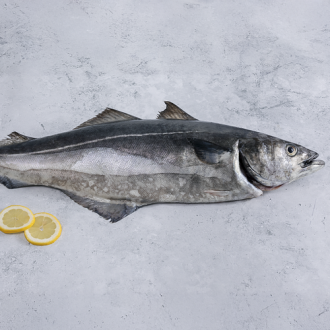Recently, a large proportion of Norway’s cod and haddock fishery lost its MSC certification. However, this is not because the stocks are in threatened conditions, nor because the cod and haddock are fished in an unsustainable manner.
Here’s why you can still trust Norwegian origin to continue to deliver on sustainability.
Our cod comes from the largest cod stock in the world – the North East Arctic (NEA) cod stock. It is considered healthy and viable by the International Council for Exploration of the Sea (ICES) as well as the Norwegian Institute of Marine Research (IMR). The same goes for the haddock. In short, Norwegian cod and haddock are still very much sustainable seafood options.
So why are parts of Norwegian cod and haddock no longer certified?
For the time being, cod and haddock caught within 12 nautical miles of Norwegian shores are no longer MSC certified because of bycatches of another cod stock, the coastal cod.
Unlike the migrating NEA cod (skrei), the coastal cod stock is a stationary cod. But as the two cod species swim in the same areas during the primary fishing season (January – April) it is estimated that around 1 in 20 cod caught are coastal cod. This estimate is higher than the MSC allows for the continued certification of the inshore NEA stock (less than two percent inclusion rate).
Only through DNA testing have Norwegian scientists found a way to distinguish between these two visually inseparable cods, providing valuable data estimations on the bycatch of this cod stock. Because it is not possible to tell the cods apart without DNA testing, it has also not been possible to establish a separating system at landing, which could also allowed for continued MSC certification.
What’s being done to address the coastal cod situation?
Following a revision on the coastal cod stock data earlier this year, a revised rebuilding plan for the costal cod is now being discussed. The Institute of Marine Research is also currently reviewing models and data to evaluate harvesting strategies. The Norwegian Seafood Council is positive to the work being carried out, which will hopefully lead to MSC-recertification for the entire Northeast Arctic Cod and haddock fishery.
By following an ecosystem-based approach to fisheries management, Norway has allowed for data on more than just our targeted fish stocks. Be it minor sub stocks or effects on other parts of the ecosystem. Data concerning stocks and the wider ecosystem remains key for sustainable fishery practices.
Read more detailed information on the issue.
Skrei fishing– a cultural heritage based on quality and sustainability
More than two thirds of Norwegian cod is caught closer than 12 nautical miles from the shore and is thus affected by the loss of the MSC certification. Every year, for thousands of years, skrei cod in their millions have made the long journey from the depths of the Barents Sea to the coastal areas off the Lofoten archipelago.
The skrei fishery is one of the most important cod fisheries in the world, not only delivering sustainable cod of the highest quality to discerning customers all over the world, but also supporting communities and livelihoods along the long, rugged coast of Northern Norway. The vast majority of cod caught between January and April are caught by small boats, often with no more than one or two crew onboard.
Buy Norwegian seafood with a clear conscience
Norway is a world leader when it comes to marine research and science-based resource management. These sustainability credentials stand regardless of third-party certifications such as the MSC, which no doubt provide an important platform for buyers and consumers to lean on when wanting to understand their sustainable seafood options. However, it is important to recognise that the MSC is just one of many organisations that provide such an endorsement, and country and organisation credentials still stand regardless.
Read more about why you can trust Norwegian seafood when it comes to sustainability.






